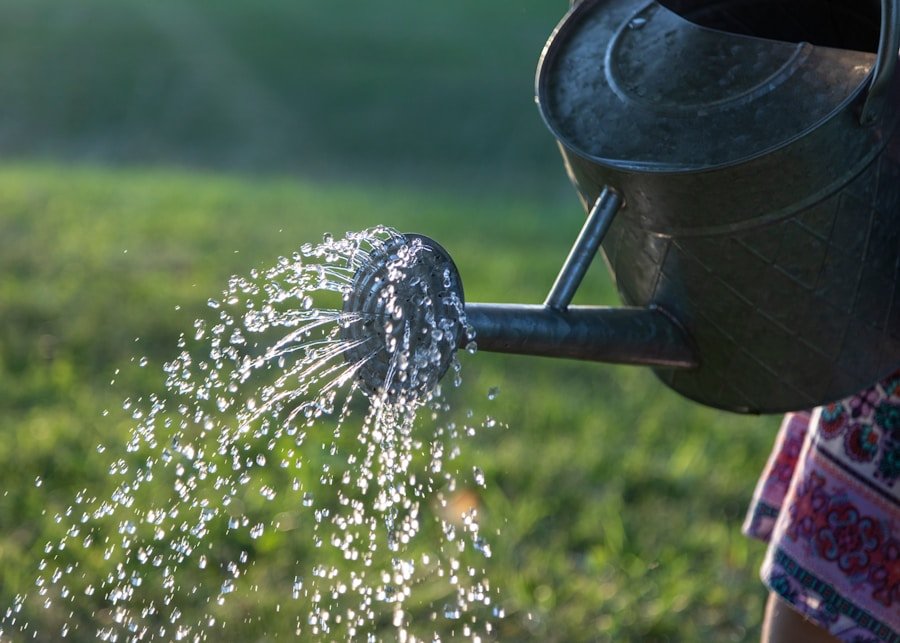In indoor gardening, light and temperature are two critical factors that significantly impact the success or failure of plant growth. Light is vital for photosynthesis, the process by which plants convert light energy into chemical energy to fuel their growth and development. Insufficient light exposure hinders plants’ ability to produce the energy required for optimal growth.
Temperature, on the other hand, plays a crucial role in maintaining plant health and development. Different plant species have unique temperature requirements, and maintaining optimal temperature levels is essential for promoting healthy growth and preventing stress or damage. The interplay between light and temperature also has a profound impact on plant growth.
For instance, the intensity and duration of light exposure can influence the surrounding temperature, while temperature can affect the way plants absorb and utilize light. Recognizing the intricate relationship between light and temperature is essential for creating an optimal environment that fosters healthy growth and development in indoor gardens.
Key Takeaways
- Understanding the importance of light and temperature is crucial for successful indoor gardening.
- Choosing the right lighting and managing temperature levels are key factors for healthy plant growth.
- Monitoring and adjusting light and temperature throughout the year is essential for different types of indoor gardens.
- Avoiding common mistakes in managing light and temperature is important for maintaining optimal conditions.
- The benefits of maintaining optimal light and temperature levels include healthier plants and better yields in your indoor garden.
Choosing the Right Lighting for Your Indoor Garden
Fluorescent Lights: A Popular Choice
Fluorescent lights are a popular choice for indoor gardening due to their energy efficiency and affordability. They are available in different spectrums, making them suitable for different stages of plant growth.
LED Lights: Energy-Efficient and Customizable
LED lights are another excellent option for indoor gardening, as they are energy-efficient and can produce specific light spectrums that are beneficial for plant growth.
HID Lights: High-Intensity Lighting for Larger Gardens
HID lights, such as metal halide and high-pressure sodium lights, are known for their high light intensity, making them suitable for larger indoor gardens or plants with high light requirements. When choosing the right lighting for your indoor garden, it’s essential to consider the specific needs of your plants and the space available for your garden.
Managing Temperature Levels for Healthy Plant Growth
In addition to lighting, managing temperature levels is crucial for promoting healthy plant growth in your indoor garden. Different plants have different temperature requirements, so it’s essential to research the specific needs of your plants and create an environment that meets those requirements. Generally, most indoor plants thrive in temperatures between 65-75°F during the day and slightly cooler temperatures at night.
However, some plants may have specific temperature requirements, so it’s essential to consider the individual needs of your plants when managing temperature levels. Maintaining consistent temperature levels is also essential for preventing stress or damage to your plants. Fluctuations in temperature can cause shock to your plants and affect their overall health and development.
To manage temperature levels in your indoor garden, consider using a thermometer to monitor the temperature and make adjustments as needed. You can also use heating mats or cooling fans to regulate the temperature in your indoor garden and create a stable environment for your plants.
Monitoring and Adjusting Light and Temperature Throughout the Year
| Tip | Light Level | Temperature Range |
|---|---|---|
| 1. Choose the right location | Direct sunlight for 6-8 hours | 65-75°F (18-24°C) |
| 2. Use grow lights | 12-16 hours of artificial light | 65-75°F (18-24°C) |
| 3. Monitor light intensity | 1500-3000 foot-candles for most plants | 65-75°F (18-24°C) |
| 4. Control temperature fluctuations | N/A | Avoid extreme temperature changes |
| 5. Use a thermometer and hygrometer | N/A | Keep track of temperature and humidity levels |
Maintaining optimal light and temperature levels in your indoor garden requires ongoing monitoring and adjustments throughout the year. As the seasons change, the amount of natural light available to your indoor garden will fluctuate, requiring you to make adjustments to your lighting setup. Additionally, temperature levels can vary throughout the year, especially if you live in a region with extreme weather conditions.
To ensure that your indoor garden receives the light and temperature it needs, consider using a timer for your lights to mimic natural daylight hours and make adjustments as needed. You can also use reflective materials or moveable light fixtures to maximize natural light exposure for your plants. When it comes to managing temperature levels, consider using a thermostat to monitor the temperature in your indoor garden and make adjustments as needed.
By monitoring and adjusting light and temperature throughout the year, you can create an optimal environment for your indoor garden and promote healthy plant growth.
Tips for Maintaining Optimal Light and Temperature Levels in Different Types of Indoor Gardens
Maintaining optimal light and temperature levels in different types of indoor gardens requires considering the specific needs of your plants and creating an environment that meets those needs. For example, if you have a greenhouse or a large indoor garden, you may need to invest in high-intensity lighting or heating systems to create a suitable environment for your plants. On the other hand, if you have a small indoor garden or a collection of houseplants, you may be able to meet their light and temperature requirements with more affordable and energy-efficient lighting options.
When it comes to maintaining optimal light and temperature levels in different types of indoor gardens, it’s essential to consider factors such as the size of your garden, the specific needs of your plants, and the space available for your garden. By understanding the unique requirements of your indoor garden, you can create an environment that promotes healthy plant growth and ensures the success of your gardening endeavors.
Common Mistakes to Avoid When Managing Light and Temperature in Indoor Gardens
Avoiding Overexposure to Direct Sunlight
While maintaining optimal light and temperature levels is crucial for promoting healthy plant growth in your indoor garden, there are several common mistakes that many gardeners make when managing these factors. One common mistake is overexposing plants to direct sunlight, which can cause sunburn or heat stress. It’s essential to research the specific light requirements of your plants and provide them with the appropriate amount of light exposure.
Monitoring Temperature Levels
Another common mistake is neglecting to monitor temperature levels in your indoor garden. Fluctuations in temperature can have a significant impact on the overall health and development of your plants, so it’s essential to use a thermometer to monitor the temperature and make adjustments as needed.
Adjusting Lighting and Heating Systems Seasonally
Additionally, failing to adjust lighting or heating systems throughout the year can also lead to suboptimal conditions for your plants. By being mindful of these common mistakes, you can create an optimal environment for your plants to thrive.
The Benefits of Maintaining Optimal Light and Temperature Levels for Your Indoor Garden
Maintaining optimal light and temperature levels in your indoor garden offers several benefits for both you and your plants. By creating an environment that meets the specific needs of your plants, you can promote healthy growth and prevent stress or damage to your plants. This can result in more vibrant foliage, increased flower production, and overall better plant health.
In addition to promoting healthy plant growth, maintaining optimal light and temperature levels can also lead to increased productivity in your indoor garden. By creating an environment that meets the specific needs of your plants, you can ensure that they receive the energy they need to thrive and produce a bountiful harvest. Whether you’re growing herbs, vegetables, or ornamental plants, maintaining optimal light and temperature levels can lead to more successful gardening endeavors.
In conclusion, maintaining optimal light and temperature levels is crucial for promoting healthy plant growth in your indoor garden. By understanding the importance of light and temperature, choosing the right lighting, managing temperature levels, monitoring and adjusting throughout the year, considering different types of gardens, avoiding common mistakes, and reaping the benefits of maintaining optimal conditions, you can create an environment that promotes healthy growth and ensures the success of your gardening endeavors. Whether you’re a seasoned gardener or just starting with indoor gardening, taking these tips into consideration can help you create an optimal environment for your plants and enjoy a thriving indoor garden all year round.
FAQs
What are the optimal light levels for an indoor garden?
Most indoor plants require 12-16 hours of light per day. The intensity of light needed varies depending on the type of plant, but in general, plants need bright, indirect light for optimal growth.
What are the best types of light for indoor gardens?
For indoor gardens, full-spectrum LED grow lights are the most efficient and effective option. They provide the necessary light spectrum for plant growth and are energy-efficient.
How can I maintain optimal temperature levels for my indoor garden?
Most indoor plants thrive in temperatures between 65-75°F (18-24°C) during the day and slightly cooler at night. It’s important to keep the temperature consistent and avoid drastic fluctuations.
What are some tips for maintaining optimal light and temperature levels for an indoor garden?
Position your plants near a south-facing window to maximize natural light, use a timer for your grow lights to ensure consistent light exposure, and consider using a small fan to help regulate temperature and prevent stagnant air.
What are the consequences of not maintaining optimal light and temperature levels for an indoor garden?
If plants do not receive enough light, they may become leggy, have stunted growth, or fail to produce flowers or fruit. Inconsistent or extreme temperatures can also stress plants and lead to wilting, leaf drop, or even death.







1 Comment